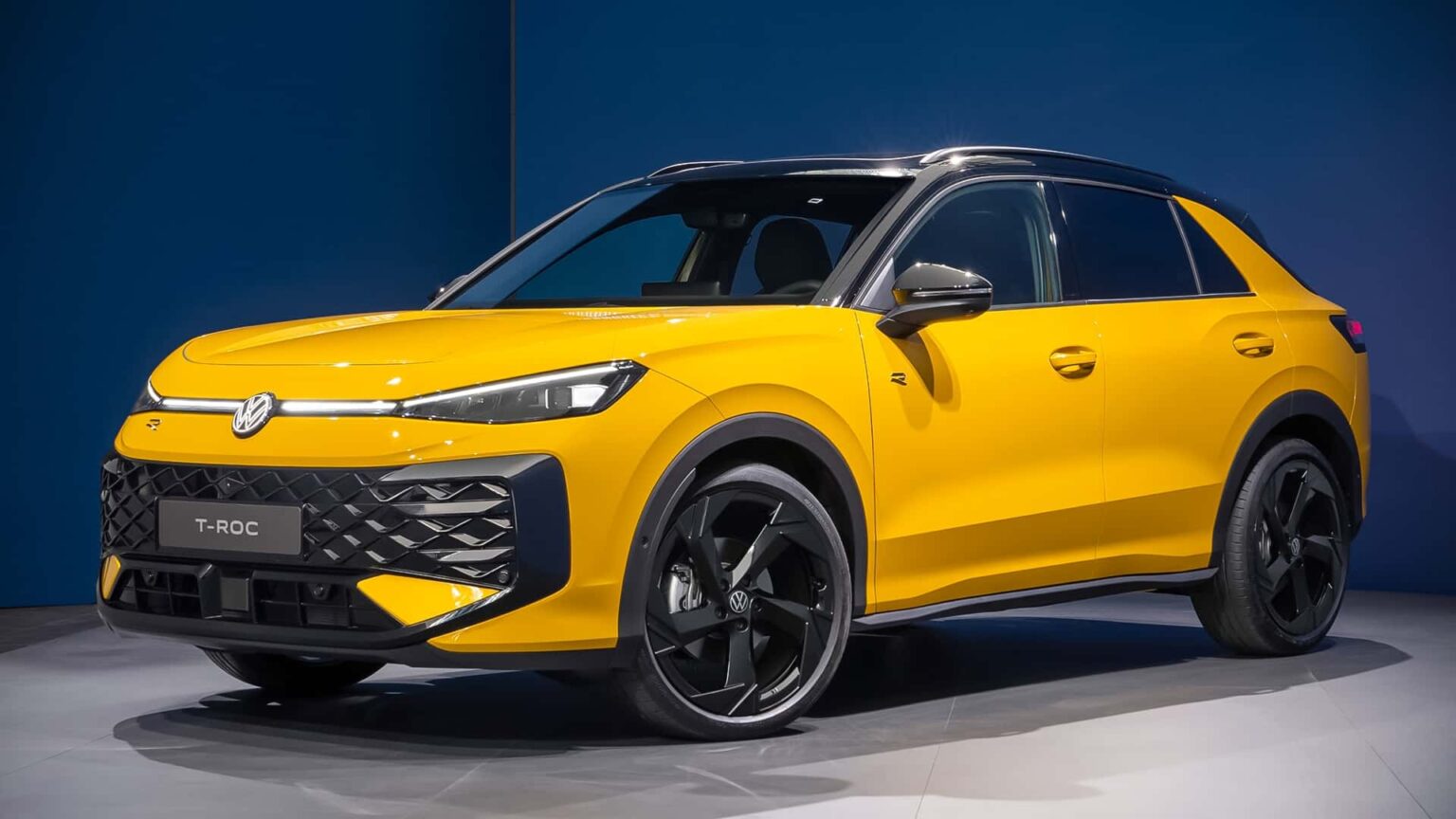Ever since the Beetle was retired, the Golf has dominated Volkswagen’s sales charts. However, its top spot is now under threat from what is essentially its SUV counterpart, the T-Roc. More than two million units have been sold since the original model debuted in late 2017, and now the second generation has officially arrived. Predictably, VW is playing it safe, avoiding design risks that might alienate buyers.
Essentially a Golf crossover, the T-Roc slots between the T-Cross and Tiguan in Wolfsburg’s expansive SUV lineup. As is usually the case when a vehicle transitions to a new generation, the latest model has grown. Measuring 172.1 inches (4373 millimeters), the compact family car is 4.8 in (122 mm) longer than before. To improve rear legroom, part of the added length has been allocated to the wheelbase, which is now stretched to 103.5 in (2631 mm), an increase of 1.1 in (28 mm).
Photo by: Volkswagen
Shown here in range-topping R Line trim, the 2026 T-Roc checks nearly all the boxes of today’s car design trends. It features front and rear light bars, gargantuan fake exhaust tips, illuminated badges, and a sea of glossy black trim. An oddly placed R logo on the front bumper sticks out like a sore thumb.
Inside, large screens replace most physical controls, with VW’s touch slider included to our despair. Compared to the outgoing model, most climate functions have migrated into the touchscreen, which comes in either 10.4- or 12.9-inch sizes, depending on the version. The stripped-back dashboard may disappoint fans of old-school VW interiors, but at least the Tiguan’s rotary touch dial controller has been integrated between the seats.
The automaker has promised to reintroduce physical buttons and knobs for frequently used functions, although this cannot happen overnight. Development of the new T-Roc wrapped up some time ago, making last-minute changes too costly.
Notice anything missing? The bulky gear lever no longer sits between the front seats. VW has adopted a column-mounted shifter, made possible by dropping the six-speed manual gearbox altogether. The second-gen T-Roc will be sold exclusively with a dual-clutch automatic transmission.

Photo by: Volkswagen
At launch, VW is keeping the drivetrain lineup simple. Buyers can only choose a 1.5-liter mild-hybrid gasoline engine, producing 114 hp in the base model and 148 hp in higher trims. Both are paired with a seven-speed DSG sending power to the front wheels. Two hybrid powertrains “developed from scratch” are in the pipeline, though they’ll also remain FWD. For those wanting all-weather capability with 4Motion, it will be available with a larger 2.0-liter gas engine, offered with or without mild-hybrid tech. A fully electric T-Roc isn’t planned.
The new model is a bit more practical than its predecessor. Cargo capacity has increased by 0.7 cubic feet (20 liters) to 16.4 cu ft (465 liters) when loaded to the rear seat backrests. Because sustainability is an increasingly important priority, VW used 88 pounds (40 kilograms) of recycled plastics in the cabin, equivalent to about one-fifth of the total interior plastics. That makes the T-Roc the brand’s first model with such a high share of reused materials.

33
Source: Volkswagen
Efficiency should improve slightly, too, thanks to a 10-percent reduction in drag coefficient, now rated at 0.29. Wheel sizes previously topped out at 19 inches, but customers can now opt for 20-inch alloys if they’re willing to trade some ride comfort for extra style.
While a compact crossover is hardly the most exciting vehicle on sale, VW plans to liven things up again with a performance-oriented R version. Confirmed for an early 2027 launch, it should use the most powerful iteration of the ubiquitous 2.0-liter turbo-four. The “EA888” is shared with the Golf R, although the hot hatch is reportedly getting Audi’s larger inline-five for a special hardcore edition.

24
Source: Volkswagen
In the meantime, regular T-Roc versions will reach European showrooms this November. The launch of the second-generation model doesn’t actually mark the end of its predecessor. The original will continue in convertible guise until 2027. Yes, VW still sells a vehicle with a folding top, but it’s a crossover. It’s doing better than similar oddities like the Range Rover Evoque Convertible and Nissan Murano CrossCabriolet ever did, outselling the Mazda MX-5 Miata and BMW Z4 last year in Europe.
As before, don’t expect the new model in the United States, where the Taos will remain VW’s smallest SUV offering. In Europe, the T-Roc is a huge deal, outselling the mighty Golf through the first seven months of the year. According to numbers published by Dataforce, 127,309 units were registered between January and July, compared to 119,959 Golfs in the same period.
Read the full article here



